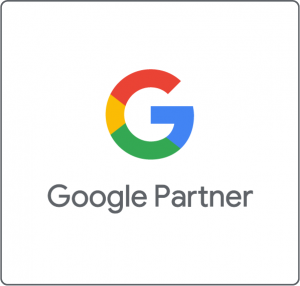We each encounter a stunning array of stimuli in our daily lives. The images and advertisements that flood our social media feeds, the apartment maintenance team revving up the weedwhacker just as we sign on to a Zoom meeting, our pets softly snoring as we write a blog about podcasts…but we digress.
If everyone was to pause and make a list of all the things they could see and hear in just this precise moment, many would understandably get lost in that sea of sound (and, of course, wind up with some extensive lists!)
Why does this constant state of stimulation matter, specifically for advertisers?
Experts say that it leads to a phenomenon of “continuous partial attention,” in which many things get just a bit of our attention, but a single thing rarely gets it all. This matters for marketers, as attention drives sales. And one particularly under-utilized area of advertising that garners a lot of attention? Podcasts.
Today, we’re digging deep into all things podcast advertising: how it’s currently utilized (or under-utilized), where its value lies for marketers, and where it’s projected to go in the next several years. Read on to learn how podcast advertising can help marketers cut through the noise—pun very much intended!
Why Podcasts? And Why Now?
The vast amount of input we encounter daily is visual—with some images front-and-center, and others in the periphery. This massive visual input is, in no small part, due to the number of ads we see. Sources estimate that most Americans encounter up to ten thousand advertisements each day! It’s no wonder that our attention is constantly divided.
Audio advertising provides a break from visual overload. 56% of Gen Z and millennials agree that audio serves as a much-needed escape. It’s a way to reach consumers without requiring them to focus their attention on an image or video. Within the broad umbrella of audio advertising, podcasts are an especially compelling opportunity, as most people listening are doing so because they want to learn.
Plus, people listen to podcasts everywhere. Recent data shows that most listening happens on smartphones, which means that listening can occur virtually anywhere: in the car, on a walk, at home, etc. As such, podcast ads provide marketers with a captive audience—ripe for high engagement—at any time, and in any place.
Sounds Great! Safe to Assume Marketers Have Been All-In, Right?
Unfortunately, that’s not entirely the case. Despite the popularity of podcasts, podcast advertising is presently an underutilized and undervalued opportunity, especially given the format’s explosive growth in the last several years.
Let’s touch on a few of the current stats on podcasting, which demonstrate this discrepancy between advertising opportunity and utilization:
- Approximately 116 million Americans listen to at least one podcast each month.
- 79% of the U.S. population is familiar with podcasts, a jump of nearly 30% from five years ago.
- The average U.S. weekly podcast listener averages eight podcast episodes per week.
Now, onto podcast ad spend:
- Podcast advertising revenues surpassed $1 billion for the first time in 2021.
- This 72% increase YoY makes its growth twice as fast as the total internet advertising market.
- These revenues are forecasted to nearly triple by 2024, to over $4 billion.
Despite the evidence that podcasts are booming and that podcast ad spend is on the rise, audio advertising is, collectively, under-invested. In the U.S. alone, audio garners upwards of 31% of all media activity. But in terms of ad spend? An underwhelming 8.8%!
Why Should Marketers Jump Onboard the Podcast Advertising Train?
Imagine this: a listener of a lifestyle podcast hears the host share their experiences using a certain product. This host is someone the listener trusts, as they listen to the podcast each week. They recall that the host has talked about this product before, and their interest is piqued. Later that week, that same product appears in their Instagram feed or alongside their virtual shopping cart. Because they heard about the product from a trusted source, and have now experienced ads across various channels, they’re ready to hit “Add to Cart.”
Podcast ads are a powerful tool marketers can add to their omnichannel strategy that allows them the flexibility to meet their ideal consumer in the right time, and in the right way. They offer opportunities for marketers to authentically engage with consumers, to personalize for distinct audiences, and to employ a flexible marketing strategy.
Let’s dive a bit deeper on these key strengths of podcast advertising.
#1: Authenticity and Engagement:
Advertising within podcasts provides an opportunity to connect with relevant audiences in an authentic way that drives engagement. These ads can captivate listeners with strong storytelling, fostering an authentic connection to a brand or product. Marketers have listeners’ undivided attention, as users cannot listen to anything else while a single audio ad is playing. Though listeners have the ability to skip podcast ads—and this is certainly a challenge with this ad type—audio ads tend to stick in listeners’ minds: upwards of 70% recall audio ads they’ve heard over the past few months!
Beyond the fact that podcasts offer a captive crew of listeners (and the ability to reach them in a way that doesn’t add to visual overload), many podcast listeners are incredibly loyal in their listening habits. Regular listeners are deeply committed to their favorite podcasts, with 46% listening within 24 hours of each episode’s release.
What’s more, podcast hosts have established rapport and trust with their audiences. For most listeners—especially millennial and Gen Z—trust, loyalty, and authenticity are critical factors that drive their purchases, especially during times of economic upheaval and inflation. Reaching them through a platform they regularly use and where trust has already been established is a huge win for marketers, and data shows that podcast ads read by hosts are perceived positively.
#2: Personalization:
Yet another benefit of podcast advertising: its strength when it comes to personalization, especially through contextual targeting.
Marketers can gain significant insight into audiences just by paying attention to the podcast’s topic, tone, and audience. In a land shaped by constantly-shifting digital advertising regulations and the coming deprecation of third-party cookies, using podcasts’ topics and audience demographics to place relevant ads within the context of those podcasts is an impactful strategy.
Advertisers can ensure their message is reaching the audience, in the right way, by placing ads in podcasts that align with their own brand voice and values. An audience already captively listening to a podcast on personal finance will be more receptive to ads directly related to that industry, just as someone listening to a true crime podcast might be more responsive to their podcast hosts touting a home security system.
Once marketers have identified their target audience, using a DSP to access premium biddable and guaranteed direct audio inventory is a great way to ensure they are connecting with that audience. And, utilizing private marketplace inventory allows advertisers to further leverage contextual targeting to reach audiences with precision and in brand-safe audio environments.
Beyond contextual targeting, advertisers can narrow and further personalize their advertisements by embracing dynamically personalized audio messages. These allow marketers to personalize the audio ads that listeners are hearing based on criteria such as age, language, weather, day of the week, and more.
#3: Flexibility:
In today’s complex digital landscape, the need for a flexible, dynamic marketing strategy has never been greater. Advertisers need the ability to test new strategies within different channels, as well as employ strategies across channels in a way that keeps brand voice and messaging consistent. Luckily, podcast advertising has developed in a way that allows marketers to lean into these demands.
First, there are many different styles and types of podcast ads that marketers can use. Though 15 to 30 second host reads currently take the cake, longer custom-branded segments are becoming more widespread. As trends continue to shift—both based on what consumers respond to and what the industry can provide—marketers have the flexibility to embrace podcast advertising strategies that meet their distinct needs.
Further, for marketers who are working to expand their reach by employing an omnichannel strategy, podcast ads offer the flexibility to do so without putting a strain on resources. For advertisers who have not yet ventured into video or audio, audio has a lower barrier to entry—podcast ads have lower production costs and have fewer components to edit than video ads. And, unlike video ads, podcast ads do not have to be ‘in-view’ to have an impact on consumers.
Finally, podcast ads offer marketers the flexibility to adapt their strategies to meet consumers where they’re spending the most time. Today, most podcast listening happens on smartphones. In the U.S., the average mobile user spends nearly four and a half hours on their phone each day. Using podcast ads increases the likelihood that consumers will be exposed to your brand or product across a variety of channels. And, as users spend more and more time on their smartphones in the coming years? Podcast advertising will continue to offer marketers the flexibility to increase their interactions with consumers on just that device.
Okay, I Hear You. What Now?
Podcast advertising demand is skyrocketing and will only continue to grow in the coming years. As programmatic audio advertising technologies evolve, alongside AI-driven contextual targeting functionality and improved data capabilities, advertising in podcasts will continue to become more sophisticated and competitive. Savvy marketers can stay ahead of the curve by prioritizing authenticity, embracing the flexibility of this audio format, and staying informed on current trends.
Want to learn more about how audio advertising could be a part of your media plan? Whether you’re looking to add programmatic audio to your digital media strategy or you’re more interested in direct buys through various private marketplaces, the opportunities are many.




